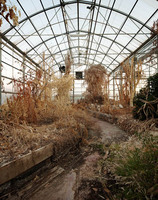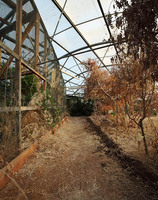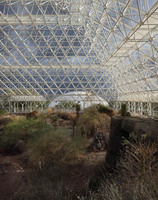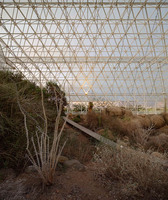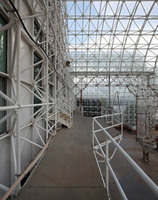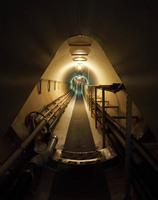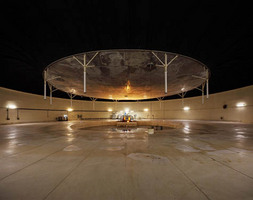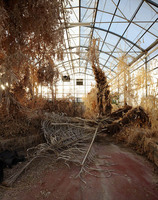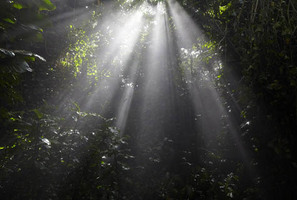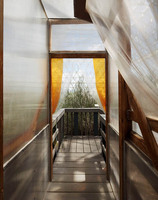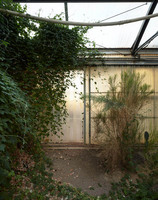Sticky Postings
All 242 fabric | rblg updated tags | #fabric|ch #wandering #reading
By fabric | ch
-----
As we continue to lack a decent search engine on this blog and as we don't use a "tag cloud" ... This post could help navigate through the updated content on | rblg (as of 09.2023), via all its tags!
FIND BELOW ALL THE TAGS THAT CAN BE USED TO NAVIGATE IN THE CONTENTS OF | RBLG BLOG:
(to be seen just below if you're navigating on the blog's html pages or here for rss readers)
--
Note that we had to hit the "pause" button on our reblogging activities a while ago (mainly because we ran out of time, but also because we received complaints from a major image stock company about some images that were displayed on | rblg, an activity that we felt was still "fair use" - we've never made any money or advertised on this site).
Nevertheless, we continue to publish from time to time information on the activities of fabric | ch, or content directly related to its work (documentation).
Wednesday, July 14. 2021
Interview with Patrick Keller – fabric | ch, HEK Blog (Basel, 2020) | #satellite #daylight #device
Note: Patrick Keller (fabric | ch) was in discussion with curator Sabine Himmelsbach, from Haus der elektronischen Künste in Basel (CH), about their new acquisition for the collection of the Museum: Satellite Daylight 47°33'N.
The piece will be displayed permanently in the public space of the HeK. At least until breakdown... But interestingly, it is also part of a whole program of digital conservation at HeK that should prevent its technological collapse, for which we had to follow a tight protocol of documentation and provide the source code pf the work.
-----

fabric | ch, Satellite Daylight, 47°33‘N, 2020, Vue de l'installation durant «Shaping the Invisible World», 2021, HeK. Photo.: P. Keller.
Shooting set in preparation ...

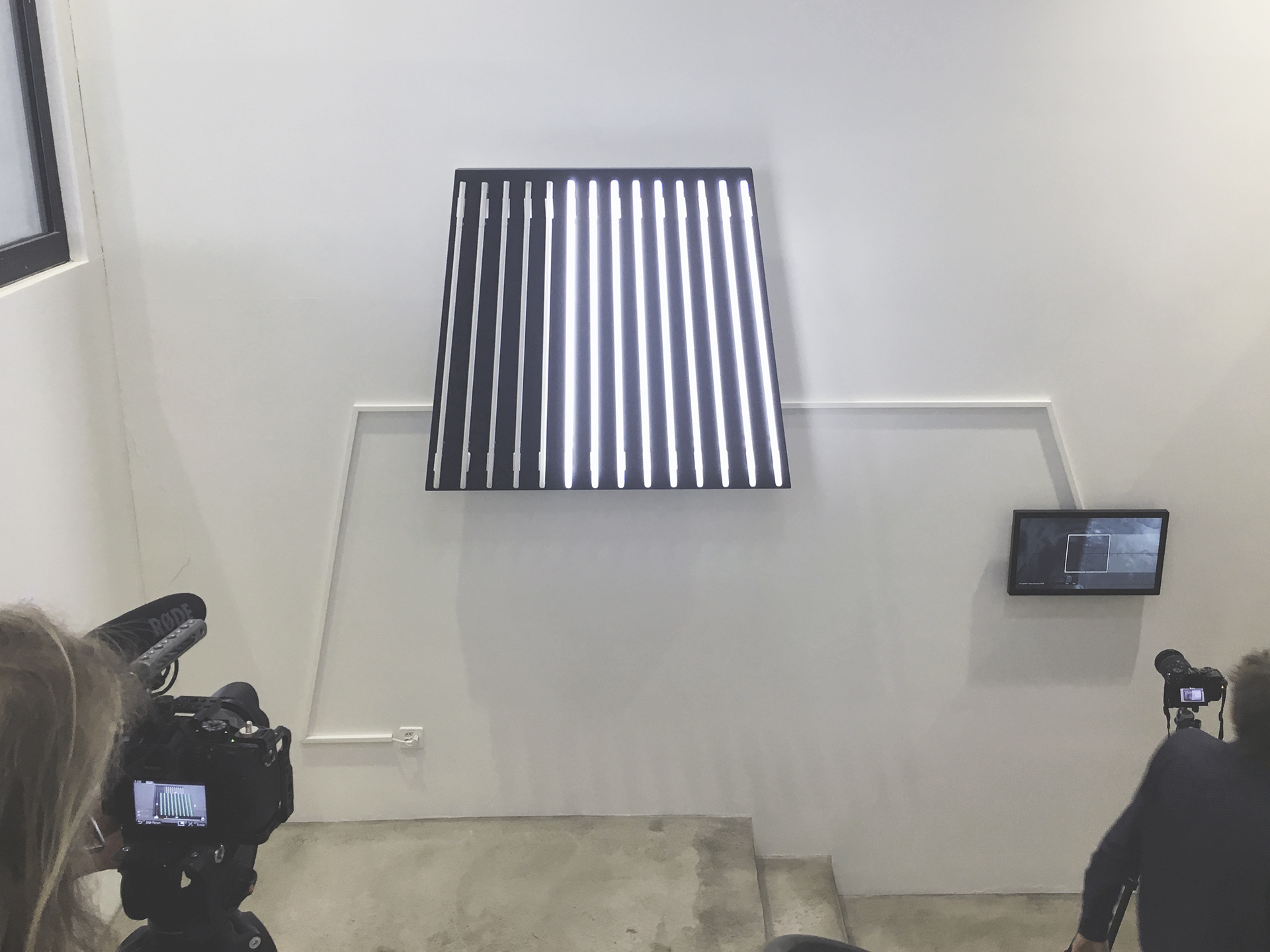
Followed by our discussion with Sabine Himmelsbach ... (with a lot of reverb in the staircase!)
-----
Via Haus der elektronischen Künste (blog)
Patrick Keller of fabric | ch, a studio for architecture, interaction and research in Lausanne, provides thrilling insight about the new work installed in the staircase of HeK.
Patrick Keller of fabric | ch, a studio for architecture, interaction and research in Lausanne, provides information about the new work in an interview. The installation Satellite Daylight, 47°33’N, commissioned for the HeK collection, simulates the light registered by an imaginary meteorological satellite orbiting the earth at the latitude of Basel at a speed of 7541m/s.
Monday, June 28. 2021
fabric | ch, Satellite Daylight 47°33‘N | #luminosity #daylight #device #environment
Note: A new work by fabric | ch has been commissionned and aquired by the Haus der elektronischen Künste (HeK) in Basel for the museum's collection, part of the Satellite Daylight serie of "environmental devices".
It is the second work of fabric | ch that enters the collection, after a serie of four videos related to Satellite Daylight and entitled Satellite Daylight Pavilion. We are glad to join artists in the collection like Jodi, mediengruppe!Bitnick, Etoy, ... and also former students or colleagues at ECAL/University of Art and Design Lausanne (Juerg Lehni, Gisin & Vanetti, FragmentIn)!
This new artwork is entitled Satellite Daylight 47°33'N, and circles in fictious and continous way around the 47°33'N latitude -- while acquiring live environmental data about daylight, light intensity, nebulosity and cloud cover that drive the luminous display. --
This continuous circonvolution, at the speed of a real Earth Satellite and that triggers 16 nights and days per regular day on Earth, produces a new combined daylight at the point of installation, both local and internationally mediated.
Satellite Daylight's is an open serie of unique artworks, each located on a different latitude.
Via fabric | ch
-----
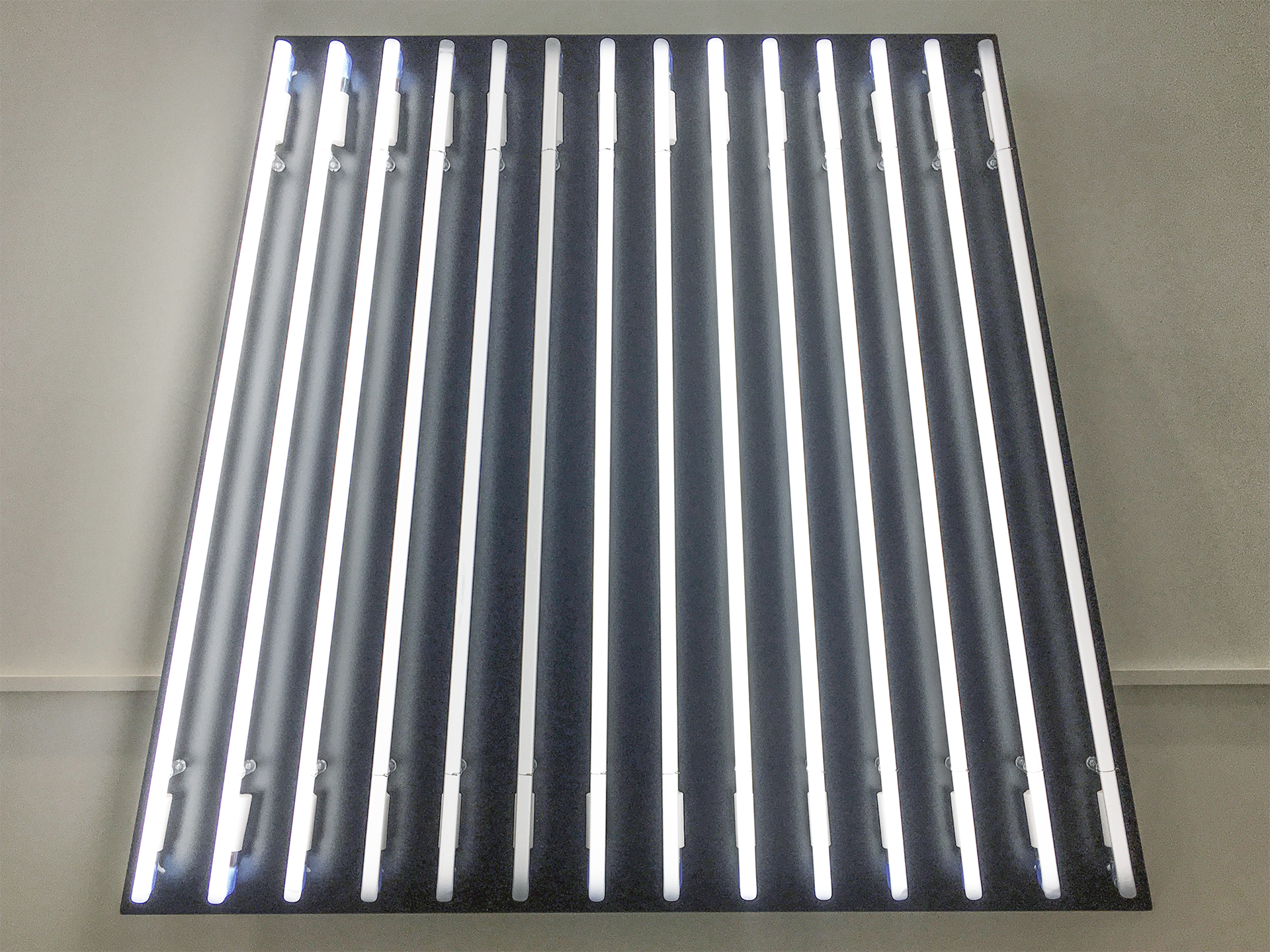

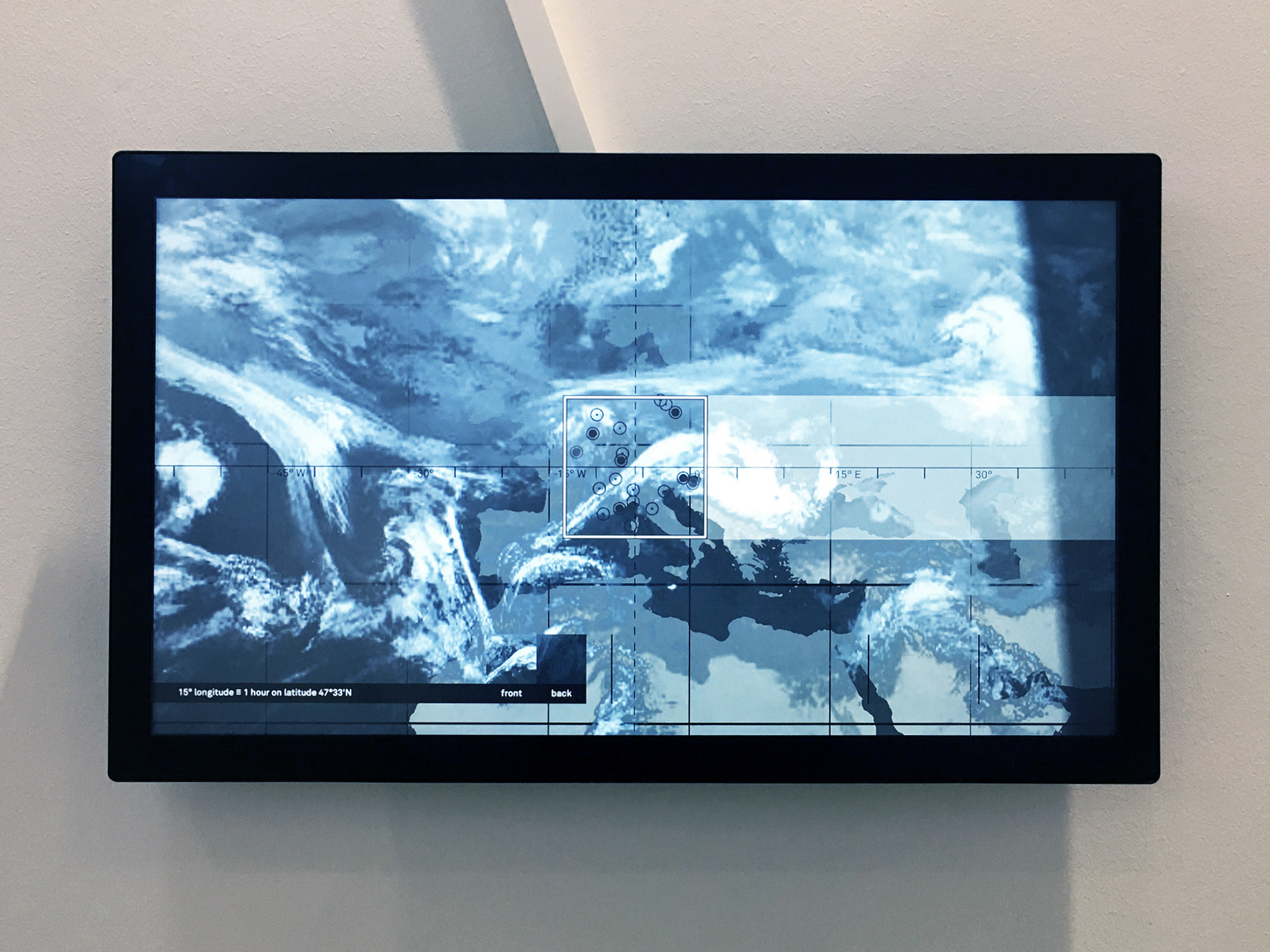
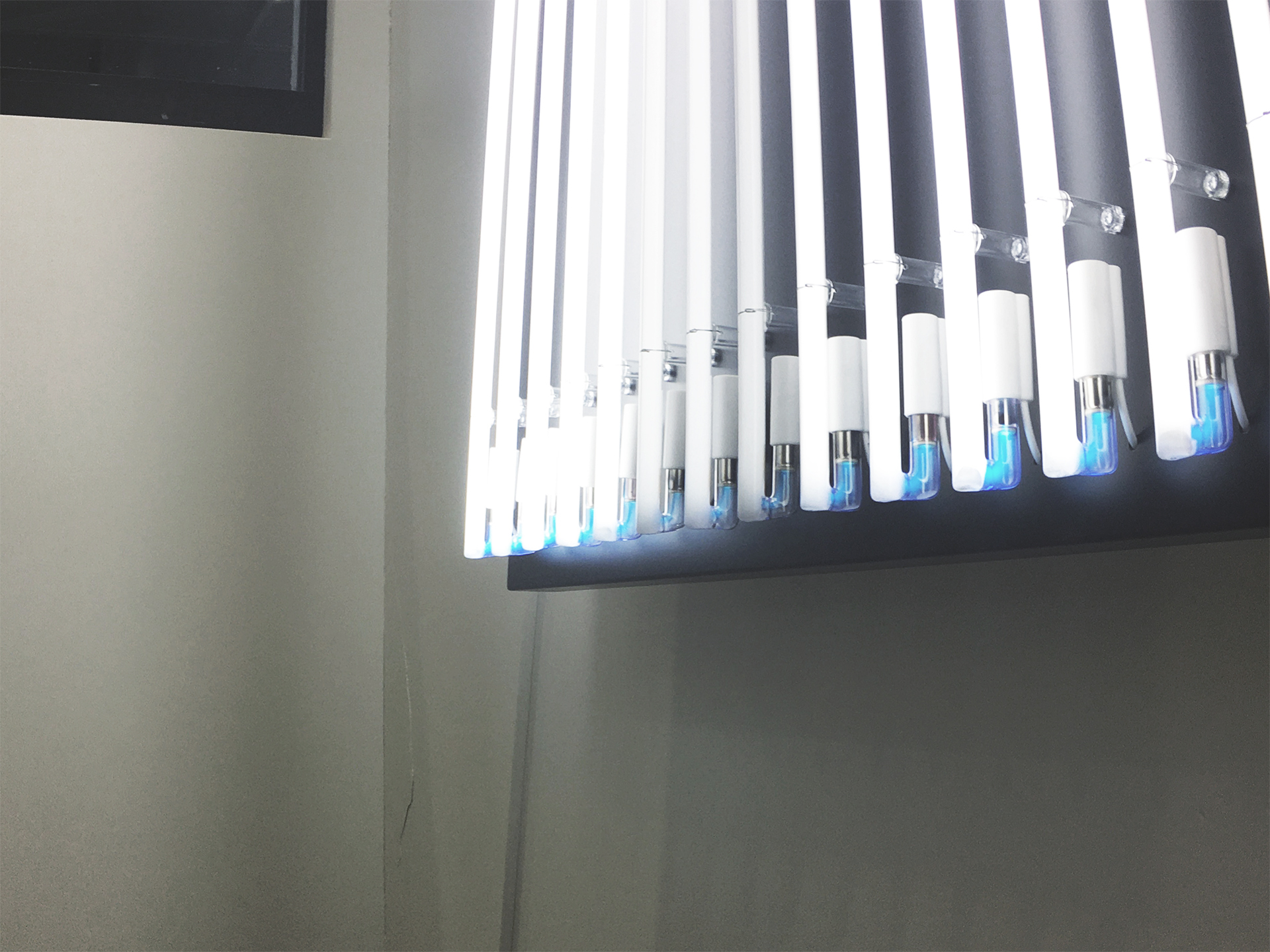
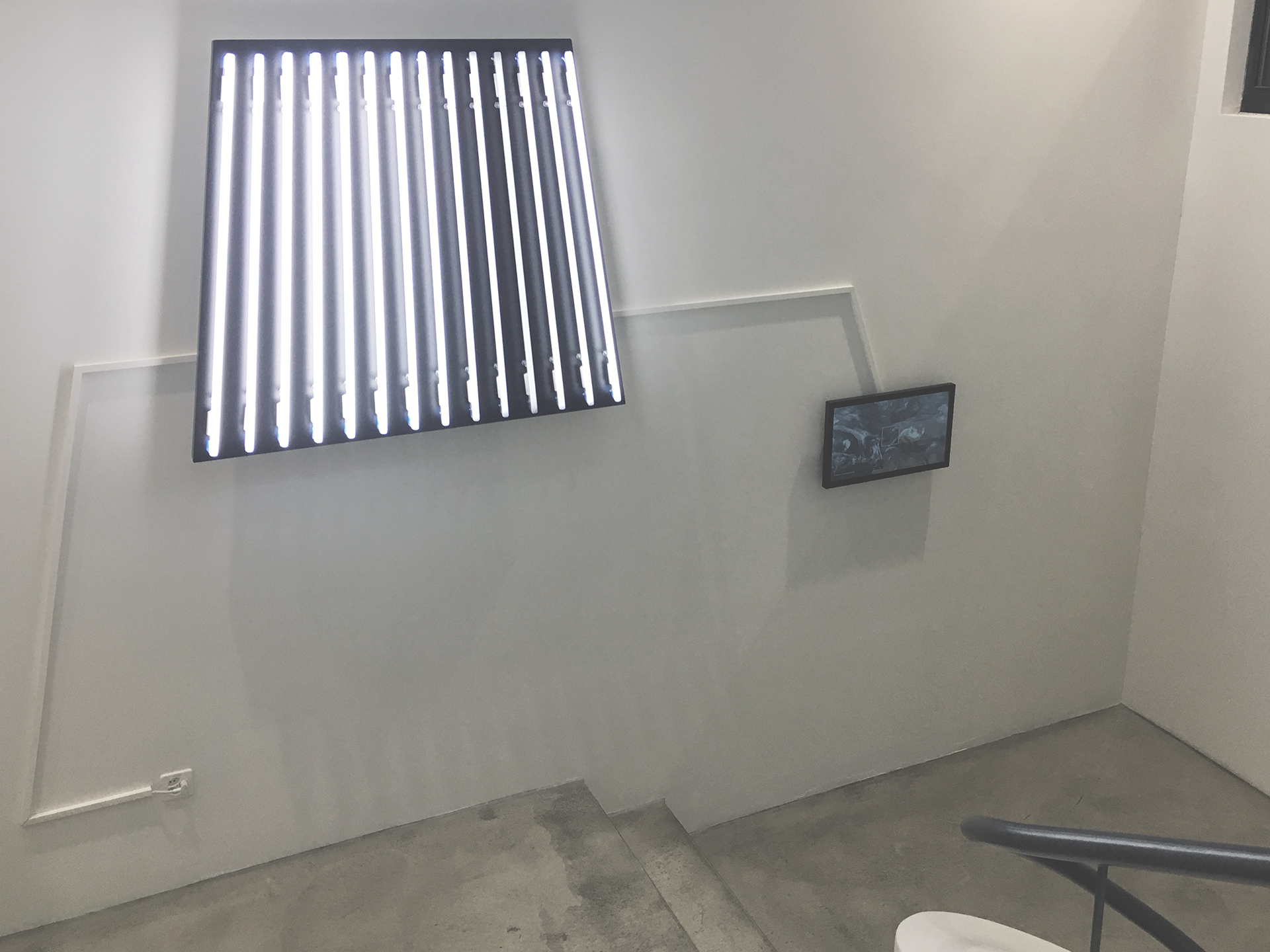

(Photo.: P. Keller)
Friday, July 29. 2011
Lean Logic: A Dictionary For The Future and How To Survive It.
-----
By Kristi
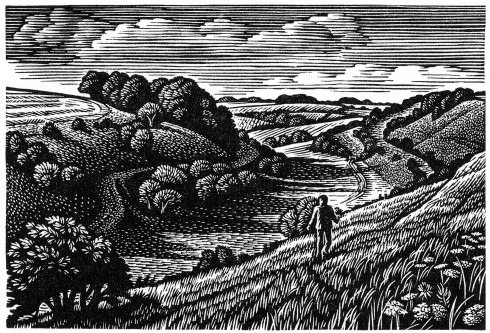
I have just received a quite extraordinary 736 page book called Lean Logic: A Dictionary For The Future and How To Survive It by the English ecologist David Fleming. The publisher describes it as a "community of essays". In my words it's half encyclopedia, half commonplace book, half a secular bible, half survival guide, half ... yes, that's a lot of halves, but I hope you get the picture. I have never encountered a book that is so hard to characacterise yet so hard, despite its weight, to put down.
The editors of Lean Logic, who have completed the project following Fleming's untimely death last year, say it's about "cooperative self-reliance in the face of great uncertainty". Well, yes. But today I have also read entries on nanotechnlogy, carnival, casuistry, multiculturalism, and the 'new domestication' - and I still have more than 1,000 entries to read. Waiting for me ahead are entries on road pricing, the vernacular, trust, resilience, the marshes of Iraq...
Lean Logic does not sugar-coat the challenges we face: an economy that destroys the very foundations upon which it depends; climate weirdness; ecological systems under stress; shocks to community and culture. Neither does the book suggest that there are easy solutions to these dilemmas. As Fleming has said, "large scale problems do not require large-scale solutions - they require small-scale solutions within a large-scale framework.
This is not a book to read from start to finish - although entry Number 1, on Abstraction, is engaging enough. Fleming defines abstraction as "Displacement of the particular - people, places, purpose - by general principle". Within a few lines Fleming introduces someone I never heard of, Alexander Herzen [1812-1870], as one of the first writers to "make the case for local detail, for pragmatic decision-making, for near-at-hand, for 'presence'. Fleming goes on to quote such other "scourges of abstraction" as Oliver Goldsmith, Montaigne, Joseph Conrad, and Matthew Arnold. And that's all on page one.
Among the incredibly useful passages I've already discovered are: a long text about 'resilience' and its multiple meanings; a clear account of Energy Decent Action Plans; an explanation of Harmonic Order; a comparative guide to barter through the ages; and a section on Lean Health.
Fleming was a co-founder of the UK Green Party, chair of the Soil Association, and active from its early days in the Transition Towns movement. He was one of the first people in the world to understand the implications for industrial civilzation of peak oil, and a good deal of the book is about energy in its many meanings. Fleming was the inventor - and advocate for more than a decade - of Tradeable Energy Quotas or TEQs. This energy rationing scheme is designed to share out fairly a nation's shrinking - as it must and will - energy/carbon budget, while allowing maximum freedom of choice over energy use.
But Lean Logic is neither a policy manifesto nor a dry technical guide. It's an incredibly nourishing cultural and scientific treasure trove. Its pages span ethics, science, culture, art, and history. The book's greatest strength, for this mesmerized reader, is the lightness with which it draws on knowledge from earlier periods of history, and from other cultures.
Lean Logic has been printed in a hardback first edition of just 500 copies, so get your order in quick.
Monday, January 03. 2011
Remnants of the Biosphere by Biospheric Design
Old post but one of the most requested SPACEINVADING projects on archinect.com
Via bldgblog
---
Remnants of the Biosphere by Biospheric Design
Location: Arizona
Image Credits: Noah Sheldon "The structure was billed as the first large habitat for humans that would live and breathe on its own, as cut off from the earth as a spaceship," the New York Times wrote back in 1992, but the project was a near-instant failure.
Photographer Noah Sheldon got in touch the other week with a beautiful series of photos documenting the decrepit state of Biosphere 2, a semi-derelict bio-architectural experiment in the Arizona desert.
The largest sealed environment ever created, constructed at a cost of $200 million, and now falling somewhere between David Gissen's idea of subnature—wherein the slow power of vegetative life is unleashed "as a transgressive animated force against buildings"—and a bioclimatically inspired Dubai, Biosphere 2 even included its own one million-gallon artificial sea.
"The structure was billed as the first large habitat for humans that would live and breathe on its own, as cut off from the earth as a spaceship," the New York Times wrote back in 1992, but the project was a near-instant failure.
- Scientists ridiculed it. Members of the support team resigned, charging publicly that the enterprise was awash in deception. And even some crew members living under the glass domes, gaunt after considerable loss of weight, tempers flaring, this winter threatened to mutiny if management did not repair a growing blot on the project's reputation.
The entire site was sold to private developers in 2007, leaving the buildings still functional andopen for toursbut falling apart.
Sheldon was originally inspired to visit and photograph the site after reading in the New York Timesthat "suburban sprawl" had come to surround the once-remote research site.
Indeed, we read, real estate development has "conquered vast swaths of the Sonoran Desert. The Biosphere, miles from nowhere when it was built in the 1980s, is now within the reach of a building boom streaking north from Tucson and south from Phoenix (and which some demographers say will eventually join the two cities, once 100 miles apart)." Traffic jams are not infrequent where there were once country roads, and new suburbs have sprung up within just a few miles of the research site.
Now, like something straight out of J.G. Ballard, the property might someday be home to a development called Biosphere Estates.
Sheldon's images, reproduced here with his permission, show the facility advancing into old age. A vast biological folly in the shadow of desert over-development, the project of Biosphere 2 seems particularly poignant in this unkempt state.
The fertile promise of the microcosm has been abandoned.
In this context, Biosphere 2 could perhaps be considered one of architect Francois Roche's "buildings that die," a term Roche used in a recent interview with Jeffrey Inaba. Indeed, in its current state Biosphere 2 is easily one of the ultimate candidates for Roche's idea of "corrupted biotopes"; the site's ongoing transformation into suburbia only makes this corruption more explicit.
Watching something originally built precisely as a simulation of the Earth —the in "Biosphere 2" is meant to differentiate this place from the Earth itself, i.e. Biosphere— slowly taken over by the very forces it was meant to model is philosophically extraordinary: the model taken over by the thing it represents. A replicant in its dying throes.
Thursday, July 15. 2010
Google climate map offers a glimpse of a 4C world
Via The Guardian (environment blog)
-----
By Adam Vaughan
Interactive tool layering climate data over Google Earth maps shows the impact of an average global temperature rise of 4C

Think it's hot this summer? Wait until you see Google's simulation of a world with an average global temperature rise of 4C.
Using a map that was first launched by the former Labour administration in October 2009, the coalition government has taken temperature data from the Met Office Hadley Centre and other climate research centres and imposed it on to a Google Earth layer.
It's a timely arrival, with warnings this month that current international carbon pledges will lead to a rise of nearly 4C and the Muir Russell report censuring some climate scientists for not being more open with their data (but exonerating them of manipulating the scientific evidence).
Unlike a similar tool using IPCC data that was launched by Google in the run-up to the Copenhagen climate conference last year, this map will be updated regularly with new data. It also has a series of YouTube videos of experts across the globe, with Met Office staff talking about forest fires in sub-Saharan Africa and researchers at the Tyndall Centre for Climate Change Research explaining sea level rises. To go more in-depth you can follow links to government sites, such as this one on water availability in a warming world.
Playing with the layer is surprisingly addictive, mainly thanks to Google Earth's draggable interface. Unlike the static map of last year, it also has the bonus of showing more obviously how temperature rises will differ drastically around the world. The poles glow a red (a potential rise of around 10C) while most of northern Europe escapes with light orange 2-3C rises. Other hotspots, such as Alaska, the Amazon and central Asia, also stand out.
Neatly, you can turn different climate "impacts" on and off. If you just want to see which regions will be worst affected by sea level rises - such as the UK and Netherlands as well as low-lying island states - you can. One limitation is that you have to zoom out to continental level to see the layer: if you're zoomed on your street, you can't see it.
Climate change minister Greg Barker launched the map today alongside the government's chief scientist, Prof John Beddington. Barker said: "This map reinforces our determination to act against dangerous man-made climate change. We know the stakes are high and that's why we want to help secure an ambitious global climate change deal."
The layer, of course, isn't the only one with an environmental theme to land on Google Earth. The UN's environment programme has one showing deforestation, WWF has a layer highlighting its projects across the globe and Google even has its own climate change "tours" for Google Earth. What other good green Earth layers have you stumbled across? And how do you rate the newest addition from the UK government?
• The KML layer of The impact of a global temperature rise of 4C is available now (you'll need a browser plug-in or the Google Earth app installed to view it)
Personal comment:
An interface and layer (Google Earth) to monitor the evolution of the predictions about climate. Should be updated as knowledge evolves.
Which brings a thought to our recent Arctic Opening project as it shoes that the arctic region will be dramatically hit by the rises of temperatures on the Globe.
fabric | rblg
This blog is the survey website of fabric | ch - studio for architecture, interaction and research.
We curate and reblog articles, researches, writings, exhibitions and projects that we notice and find interesting during our everyday practice and readings.
Most articles concern the intertwined fields of architecture, territory, art, interaction design, thinking and science. From time to time, we also publish documentation about our own work and research, immersed among these related resources and inspirations.
This website is used by fabric | ch as archive, references and resources. It is shared with all those interested in the same topics as we are, in the hope that they will also find valuable references and content in it.
Quicksearch
Categories
Calendar
|
|
July '25 | |||||
| Mon | Tue | Wed | Thu | Fri | Sat | Sun |
| 1 | 2 | 3 | 4 | 5 | 6 | |
| 7 | 8 | 9 | 10 | 11 | 12 | 13 |
| 14 | 15 | 16 | 17 | 18 | 19 | 20 |
| 21 | 22 | 23 | 24 | 25 | 26 | 27 |
| 28 | 29 | 30 | 31 | |||
